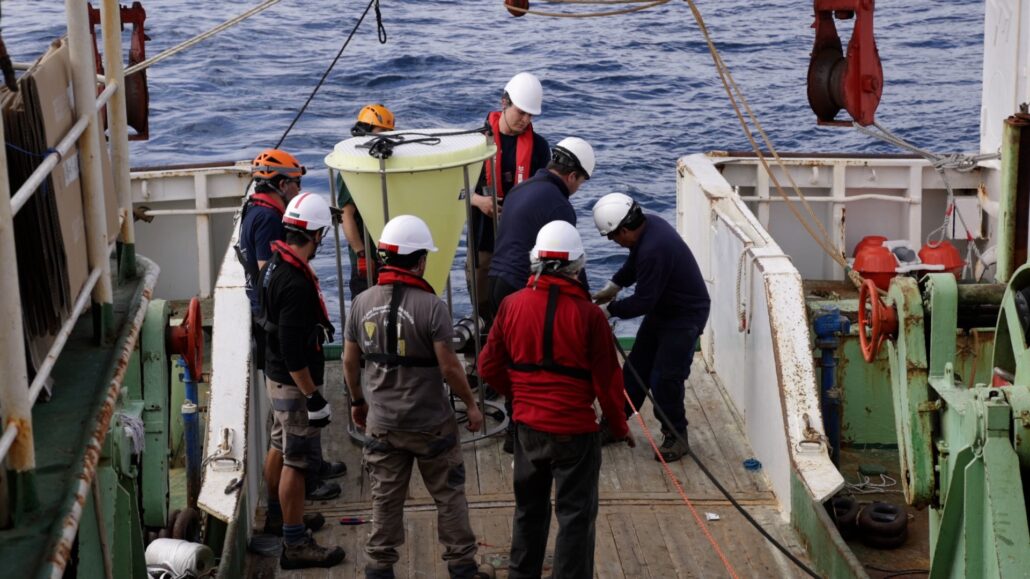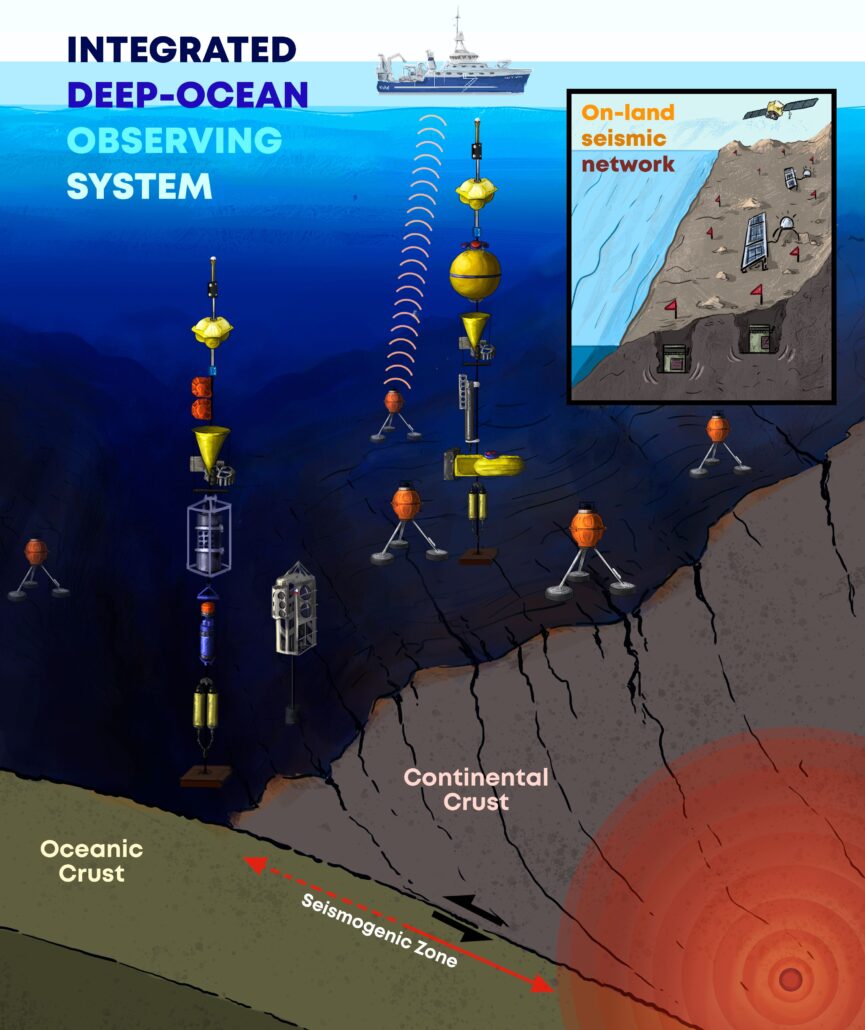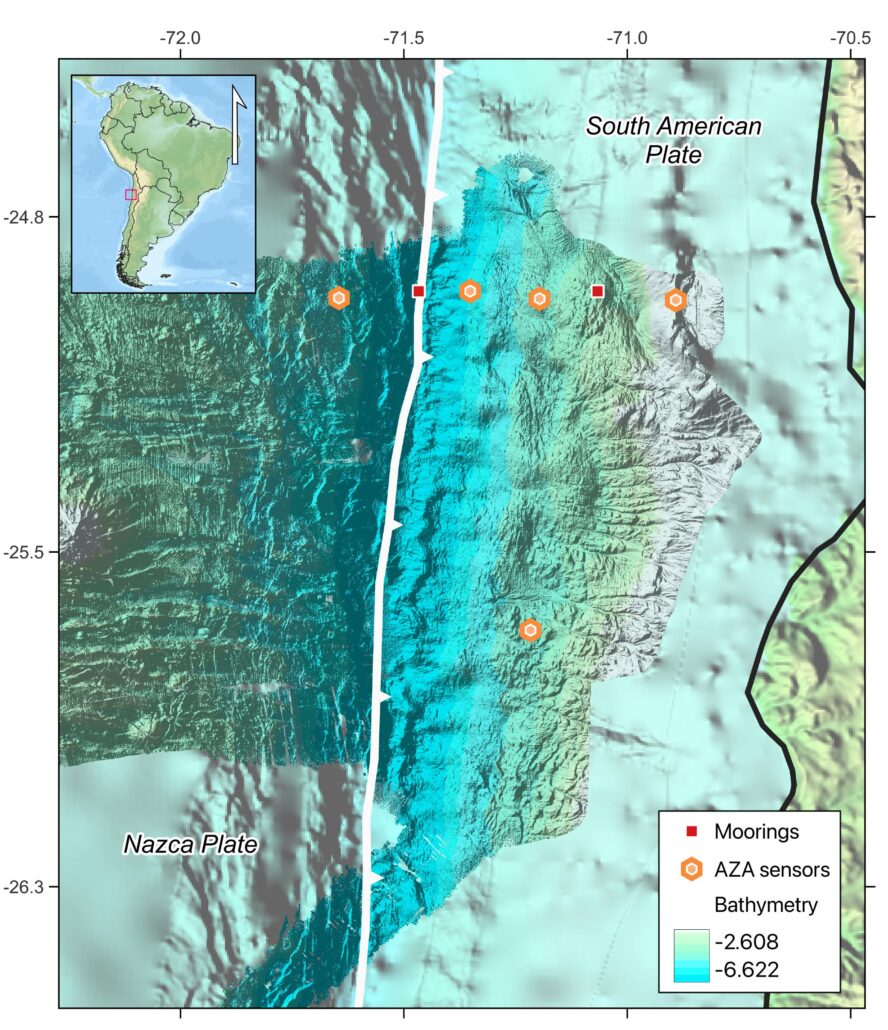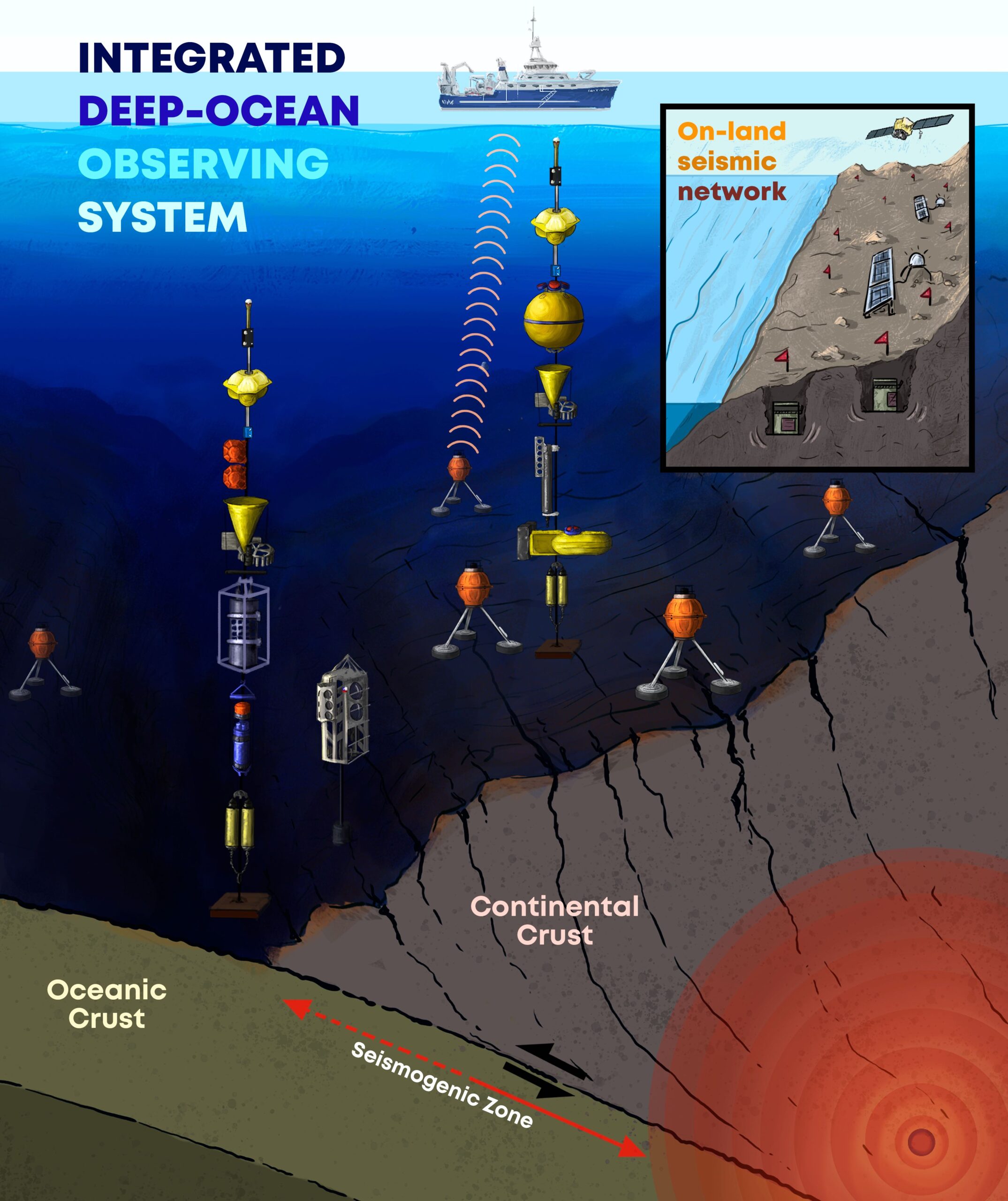Osvaldo Ulloa1,2, Marcos Moreno1,3, and Oscar Pizarro1,2
1 Instituto Milenio de Oceanografía, Concepción, Chile; 2 Universidad de Concepción, Concepción, Chile; 3 P. Universidad Católica de Chile, Santiago, Chile
This past October, researchers from the Instituto Milenio de Oceanografía (IMO) installed two deep-sea oceanographic moorings with multiple instruments, including current meters, sediment traps, conductivity-temperature-depth-oxygen (CTDO) sensors, and pCO2 sensors (Fig. 1). Using the R/V Abate Molina, one mooring (7700 – 4600 m) was placed at the bottom of the Atacama Trench and the other one (3900 – 300 m) at 3900 m depth over the slope. They are part of Chile´s first Integrated Deep-Ocean Observing System (IDOOS), seamlessly integrating state-of-the-art monitoring technologies to gather data within a cutting-edge interdisciplinary scientific framework (Fig. 2).
This ocean observing system also consist of five Fetch Ambient-Zero-Ambient (AZA) geodetic sea-bottom pressure sensors, with the new capability to remove instrumental drift and measure vertical displacements related to inter-seismic locking, seismic deformation, and slow slip or transient events. In collaboration with GEOMAR (Kiel, Germany), these transponders were installed during the SO297 cruise of the R/V Sonne in March-April 2023 in the same area of the Atacama Trench (Fig. 2), which is considered a mature seismic gap where Great earthquakes last occurred in 1819 (Mw~8.0) and 1922 (Mw~8.4). CTD data from the near-by moorings will be used to remove oceanographic noise from the pressure time series recorded on the seafloor. The IDOOS (Fig. 1) is complemented by an onshore seismometer network.
The main objective of the IDOOS is to get a better understanding of the origin and interconnection of tectonic and oceanographic processes through multi-parametric deep-sea observations over the period of —at least— five years. It should also contribute to the understanding of the deep-ocean circulation and mixing in the eastern South Pacific, and particularly in the Atacama Trench, as well as of the nature and dynamics of the particle vertical flux in the hadal zone. Moreover, a deep-ocean prototype version of the pCO2 sensor “SAMI-CO2” —moored at 3500 m depth— will be tested in the continental-slope mooring.
The IDOOS initiative is run by the IMO-Universidad de Concepción and funded by the Chilean Agency for Research and Development (ANID). Other participant institutions are the Universidad de Antofagasta, Universidad Austral de Chile, and P. Universidad Católica de Valparaíso.

Fig. 1. Deployment of IDOOS from R/V Abate Molina. Credit: Matías Pizarro.

Fig. 2. Schematic diagram of the Integrated Deep-Ocean Observing System (IDOOS), which is completed by an on-land seismic network. Credit: Felipe Gamonal.

Fig. 3. Map with the location of the two oceanographic moorings and the five geodetic sea-bottom pressure sensors installed off northern Chile as part of the IDOOS. Credit: Marcos Moreno.

